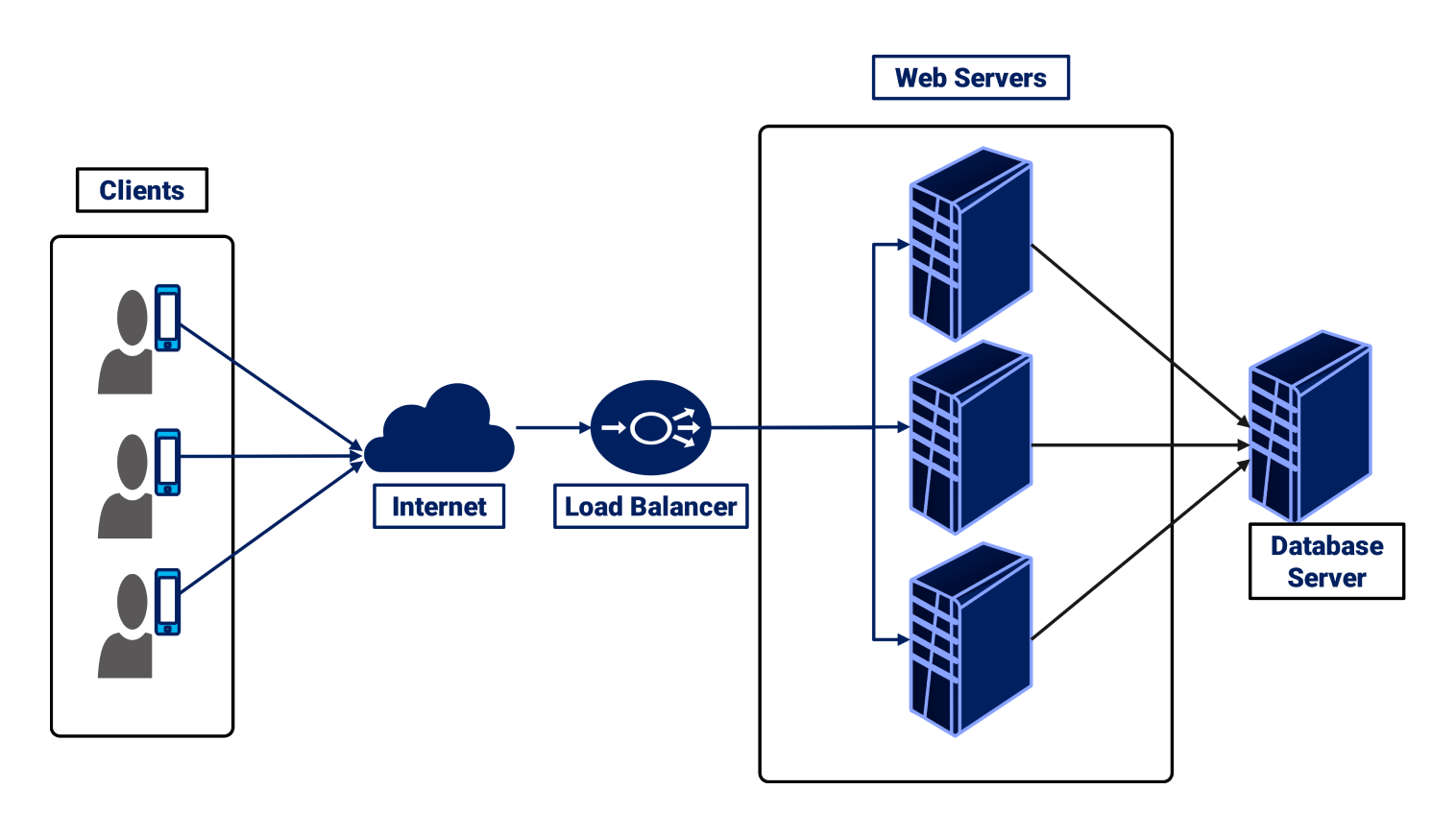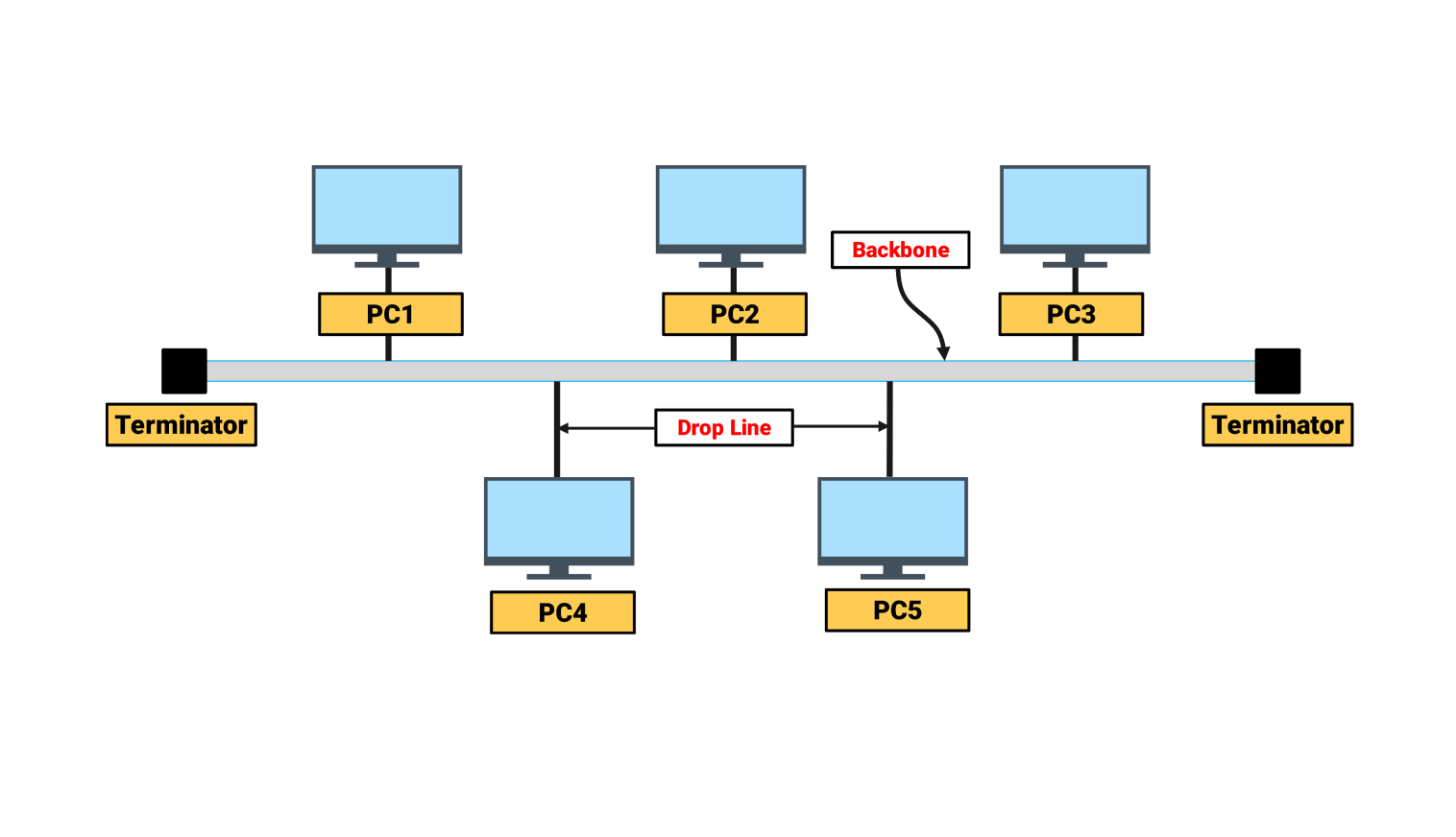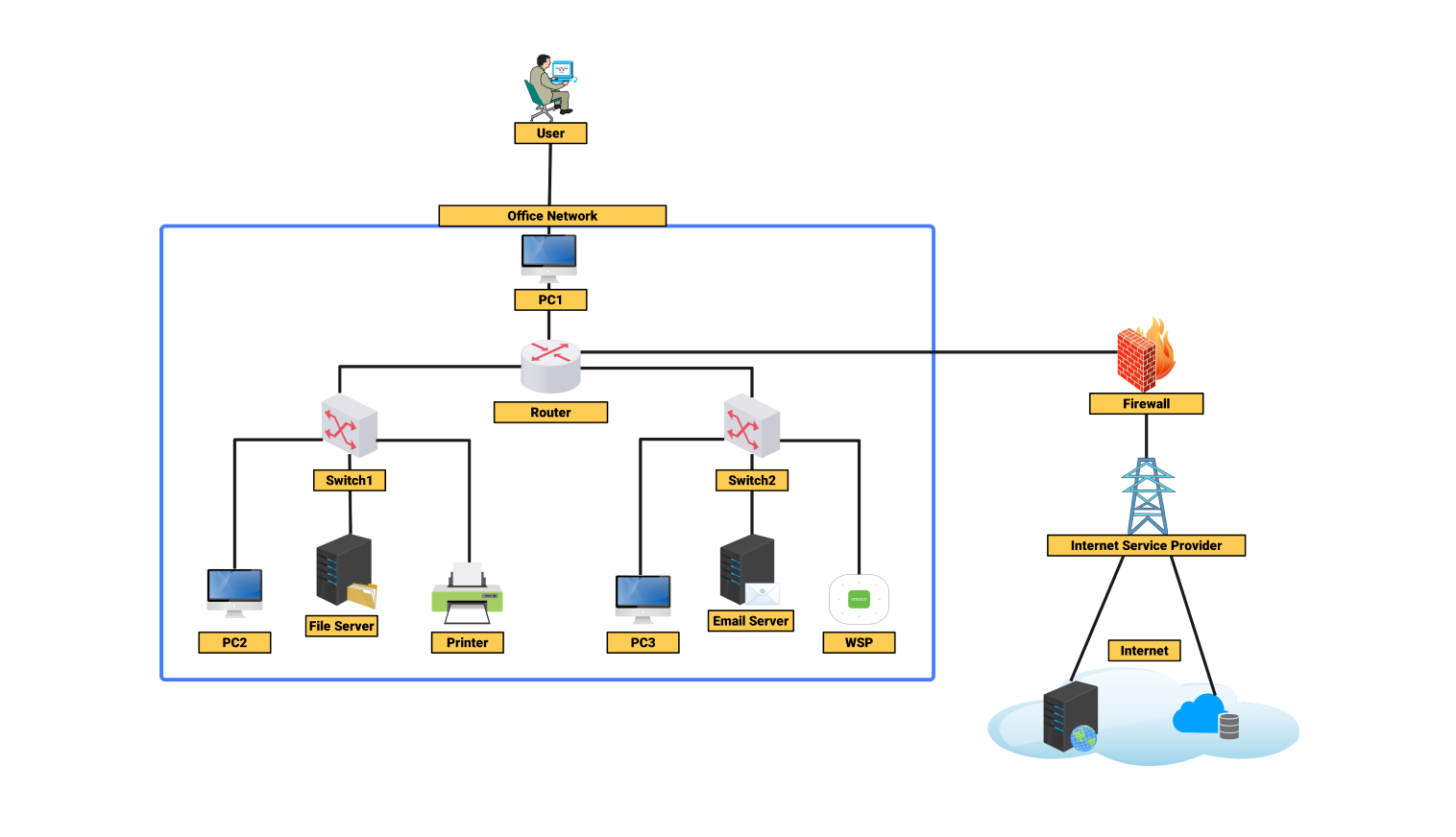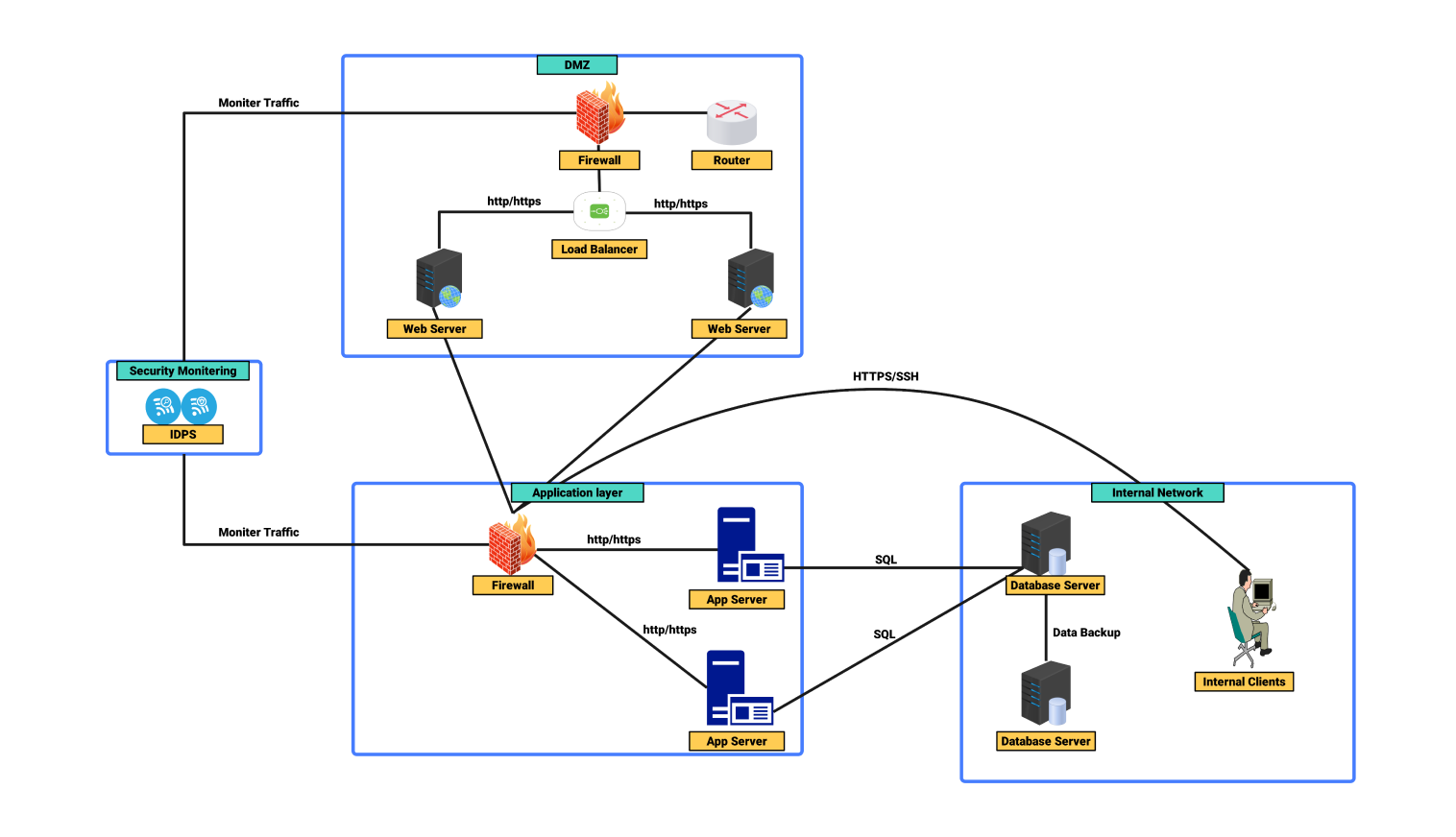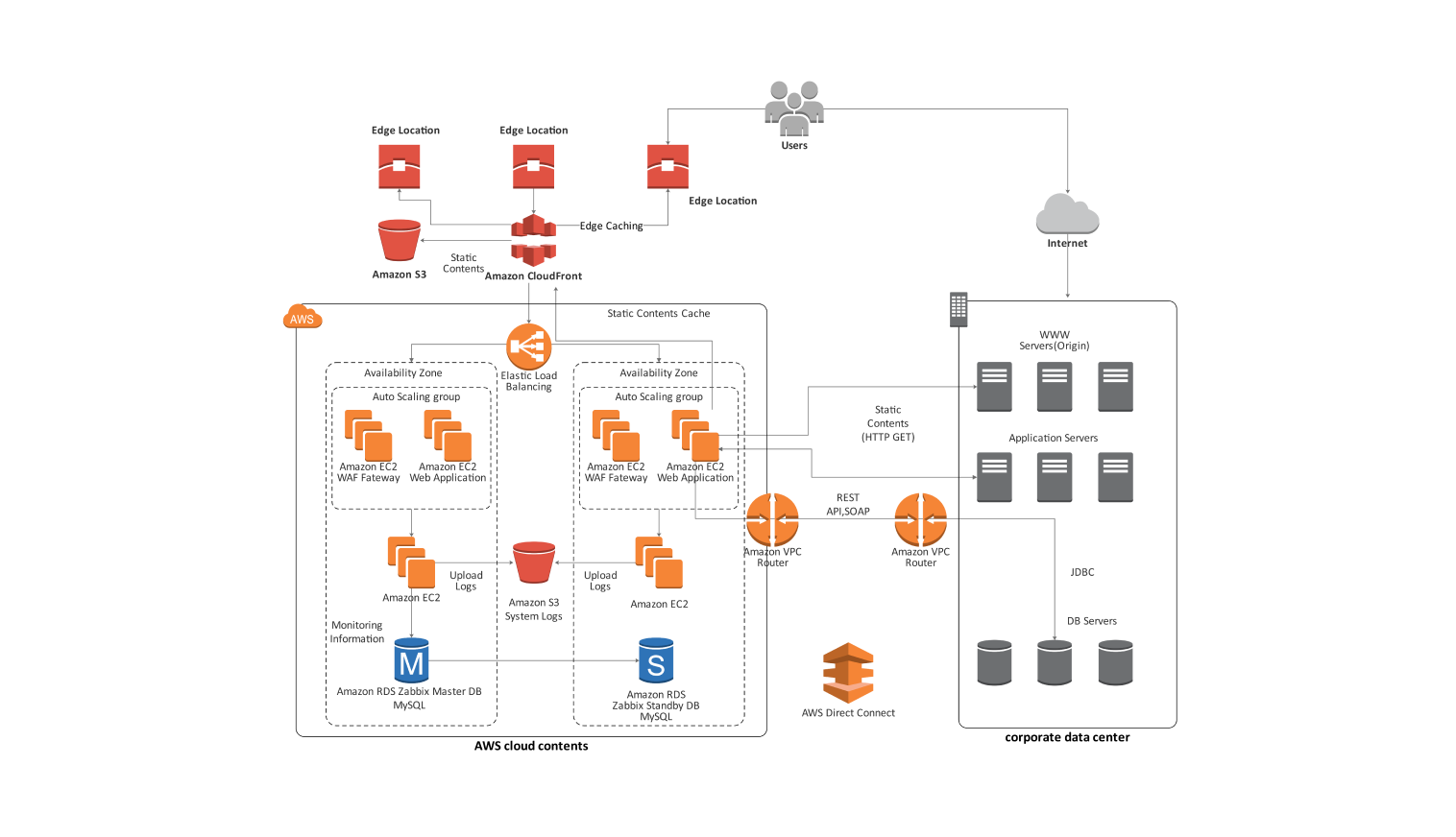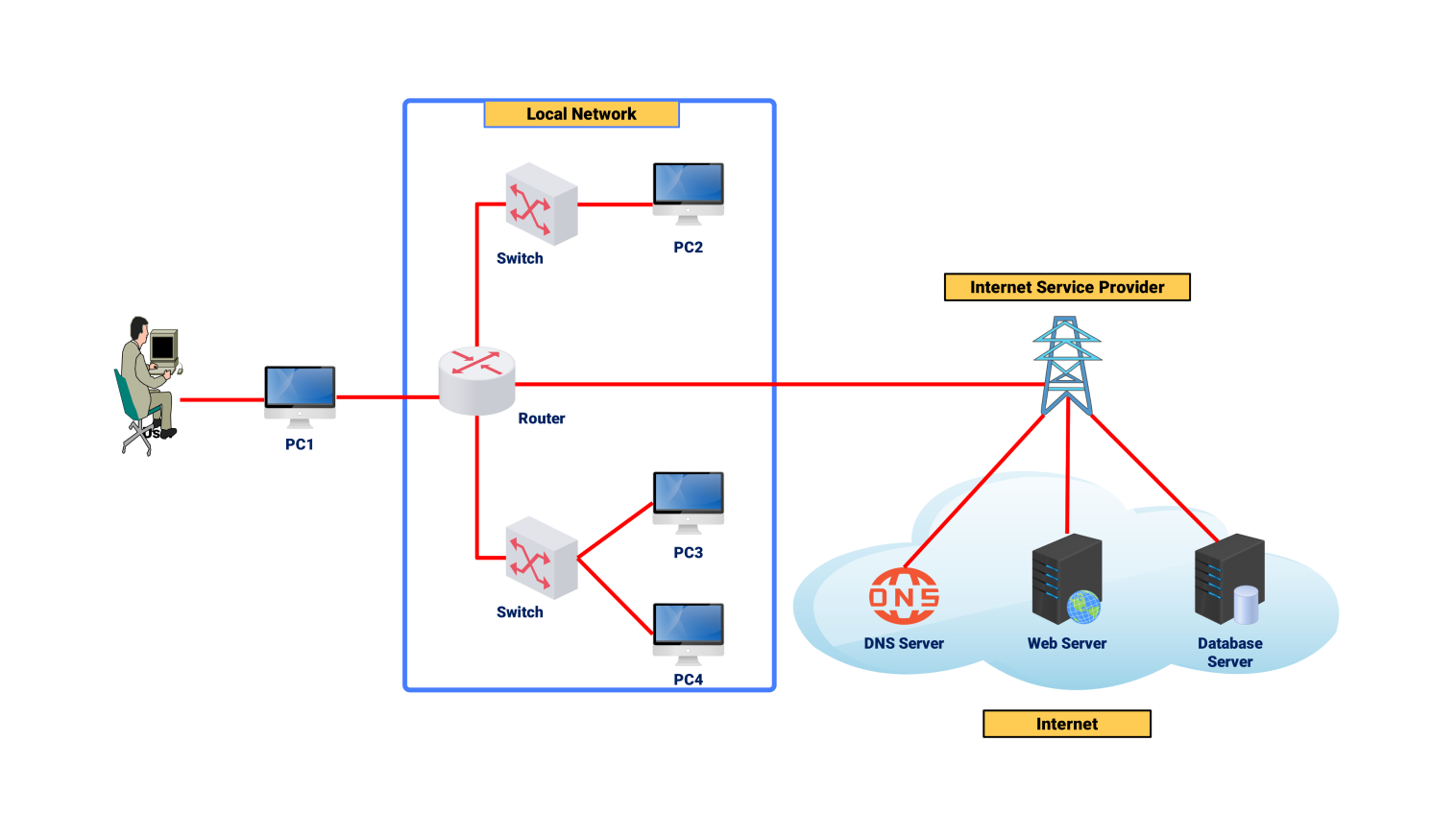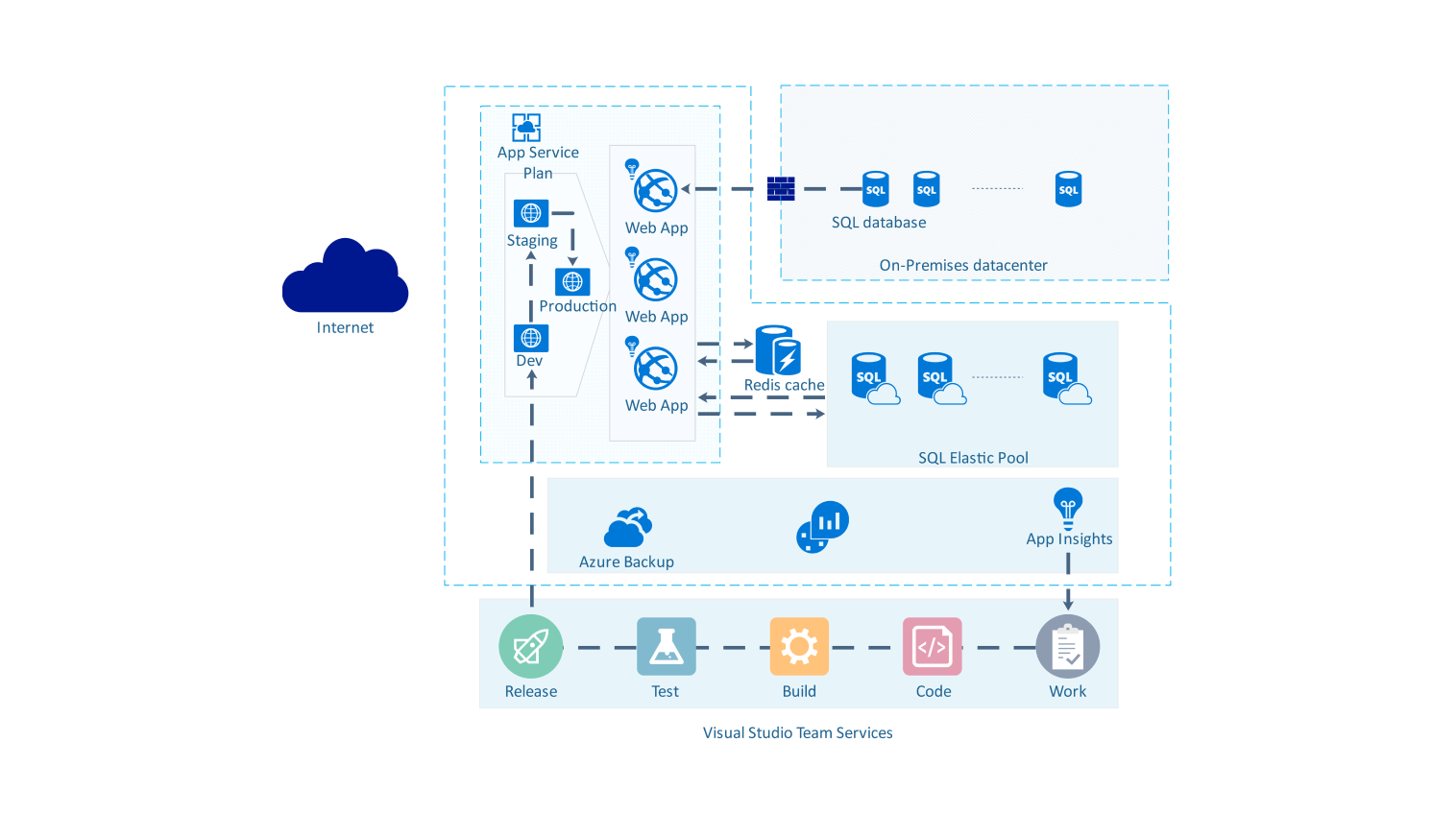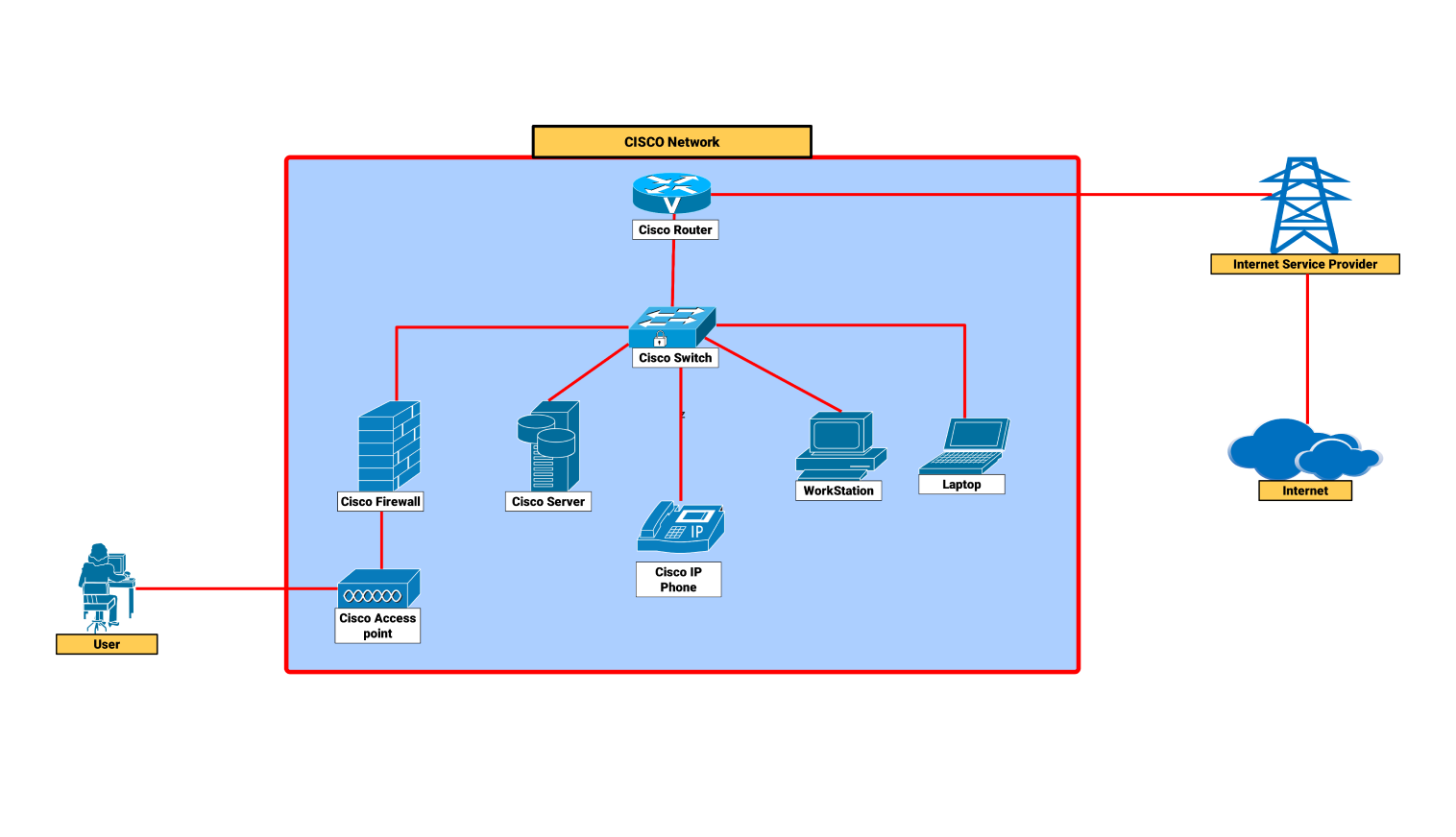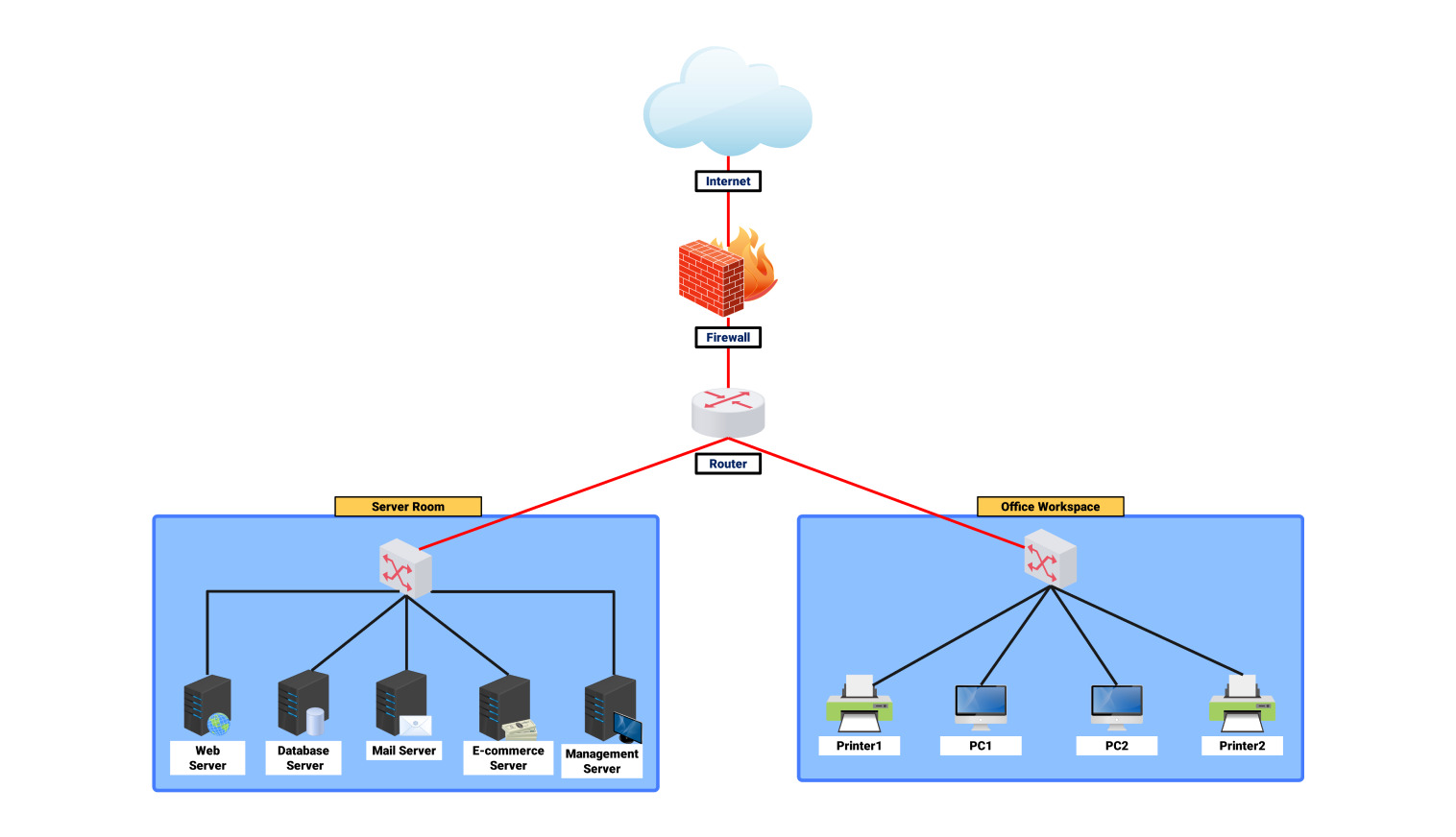- All templates
- Network diagram templates
- Network diagram load balancing
About this network diagram for the load balancing
A load-balancing network diagram shows a typical architecture for the load balancer. It ensures efficient use of resources and improves response time. It does this by spreading client requests across many servers. This is crucial for high-traffic apps like web services, online shopping, and content delivery. It helps reduce server overload and instability, as users wait very little.
In this scenario, clients' devices connect to the internet. They make requests for content or services on web servers. When a client makes a request, it will first go to a load balancer. This important element controls traffic by receiving all incoming requests.
The load balancer must check the load, health, and capacity of the web servers. Then, it can decide which server will handle each request. This method of handling requests prevents overloading any single server. It ensures good performance.
There are several web servers, behind the load balancer, to manage client requests. Each web server has the same app or content. This ensures availability and scalability. If one server is down for maintenance or a failure, the load balancer shifts traffic to the other servers. This keeps the service running. Such redundancy is important in almost every application. But, it is crucial for mission-critical apps with high uptime requirements.
The database server is the central component. It collects and manages critical information. The web servers use this data to service customer requests. A web server must read or write user data or transaction records. It will contact the database server to do this. The data centralization approach lets the database server maintain integrity. It makes it the primary source of information for all the web servers.
This load-balancing system boosts the network's efficiency and reliability. It adapts to traffic changes by increasing or decreasing the active nodes. It is a cheaper way to increase applications. This is for businesses that want more users while keeping quality. Also, this architecture distributes traffic across several servers. This reduces latency, improves fault tolerance, and minimizes interruptions. It results in better usability.
In conclusion, the load-balancing diagram is an example of an architecture that is both scalable and fault-tolerant. It is in terms of the number of incoming requests on the client side. A load balancer, app servers, and a database make things better. They improve efficiency, reliability, and user satisfaction.
Related templates
Get started with EdrawMax today
Create 210 types of diagrams online for free.
Draw a diagram free Draw a diagram free Draw a diagram free Draw a diagram free Draw a diagram free